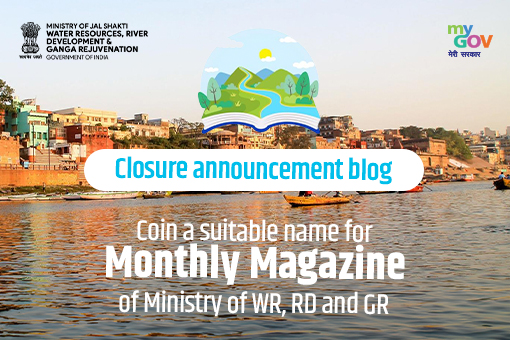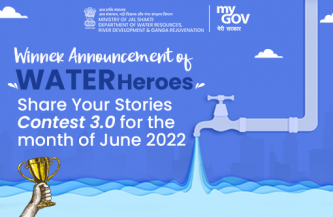Dhanbad makes 2.5 lakh Seed Balls

The district administration of Dhanbad in Jharkhand has taken up various novel initiatives to plant saplings and conserve water. One of them is the preparation and distribution of a whopping 2.5 lakh seed balls through members of Self Help Groups (SHGs). The seed balls are scattered in colliery areas with open-cast coal mines to take root, increase green cover and reduce air pollution.

Deputy Commissioner, Mr. Amit Kumar explained the process of seed ball disbursement activity.

How seed balls are made: Potting soil, clay and cow dung are mixed with water, ensuring there are no lumps. To this seeds are added and balls measuring about one inch diameter are made and left to dry in a shady place for about 24-48 hours. The balls are then ready for sowing or storing.
Kinds of seeds used: Seeds are collected from fertile hill areas: those that require less water to germinate and those that are easily available to SHG members without having to spend too much money. Seeds used in Dhanbad are: Neem, Gambhar, Bel, Jamaun, Chandan, Papaya, Bamboo, Imly, Ashok, siris, Khajur, Shesham, Simar, Kathal, Mahua, Sahjan.
As many as 190 women from 41 SHGs in Dhanbad and 70 women from 22 SHGs in Baghmara Block were incentivized to make seed balls at the rate of Rs.2 per seed ball. The seed balls were then disbursed through more than 1000 SHG women from both the blocks. The area where coal mine waste material is dumped in huge mounds (also known as over burden or OB), lacking greenery and water was selected for the seeding exercise, in coordination with BCCL (Bharat Coking Coal Limited) and the district administration.
Seeds balls were scattered on the ground and rain helps germinate the seedlings. Research indicates that there is 60-70% survival rate of plants that take root from seed balls and the results are quick.

Camphor plantation: Another innovative intervention was the Camphor plantation. Initiated by the Municipal Corporation, as many as 50,000 Camphor plants were planted in mining affected areas to absorb Sulphur Dioxide (SO2) and improve the soil of the waste land.
Afforestation along river banks: There are three major rivers that pass through the district namely, Damodar, Barakar and Jamunia. Along 11 KMS stretch, riverside plantation was undertaken in the Blocks of Dhanbad selected under Jal Shakti Abhiyan – Dhanbad, Baghmara and Topchachi Nagar Nigam.
Mobile App: The district administration also developed a new mobile application to record feedback and key observations. All officers were to submit their feedback and geo-tagged photographs of assets created through the App. While creating a buzz among the citizens of Dhanbad, the App enhanced public participation in the Jal Shakti Abhiyan as citizens were able to update their activities such as water conservation initiatives, plantations, awareness drive, oath taking, videos, etc. Efforts of individuals were recognized by awarding of certificates.
Green Fund: People were encouraged to donate to a specially established Green Fund, using simple steps on the App. Funds donated to the same were utilized for spreading awareness on water conservation and for plantation drives.

Shramdaan: Mass participation was seen in construction of Trench cum Bunds (TCB), rejuvenation of water bodies and plantation activities. In the urban areas, college students, volunteers from different civil society, government departments and corporate sector participated in the initiatives to make the campaign effective.
Other JSA Interventions:
• 1 Lakh in 1 hour Plantation Drive
• Kahi Kho Na Jaye Talab 3 Ponds rejuvenation in each Village
• Ghar ka Pani Ghar mein – 1 Soak Pit + 5 Saplings per SHG Member
• Pani ke sath Policing Mobilization of CAPF and District Police with local people
• Formation of 1465 soak pit in schools on a single day
• #JanShakti4JalShakti – more than 3000 Tweets from @DhanbadJSA and others
• Rangoli, Drawing and Essay Competitions (with Jal Shakti Sena and Eco club)

According to Deputy Commissioner, Mr. Amit Kumar, the district used the 4-C approach to make their programme effective: Collaboration – between Forest Department, Agriculture and Corporate Sectors, KVK Scientists, IITs / BIT technocrats, Chamber of Commerce, and Media Partner- Dainik Jagran; Convergence – of schemes such as MGNREGA, Urban Local Bodies, Local Area Development funds, Panchayat Funds, etc.; Competition – between different districts / blocks, different stakeholders – schools, panchayats and ‘Coffee with Mukhiya’; and Community Participation – Involvement of SHGs, Mukhiyas, Jal Sahiya, PRI Members, Ward Members etc.
Social media and print media were used to reach the maximum people. It also allowed for cross learning both inter block and inter district.
[ The Blog was first published on https://jalshakti.wordpress.com/ ]





